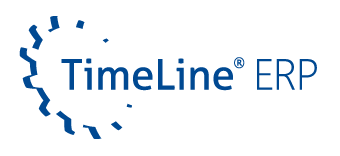ERP and DMS – a perfect match
In the age of digital technology, documents play an important role. Almost every business receives a flood of emails, letters and receipts every day. Because each document can contain important information, they are processed and then archived. The accumulated documents are usually stored in folders. It is not uncommon for filing cabinets in the office or archive to be overflowing. When an employee needs a specific document, he or she must first go to the filing cabinet to find the right folder and the document he or she is looking for. This process takes a lot of time. But even digitally stored data is not automatically better organized. Scattered across hard drives, floppy disks, and email inboxes, it can be easy to lose track of what you have. A Document Management System (DMS) is one way to bring order back to the filing system. Used correctly, a DMS software can help you keep track of your documents and make better use of your time. An Enterprise Resource Planning (ERP) system with integrated DMS offers even more benefits.
Global data volume will increase tenfold to 163 zettabytes by 2025
The mountains of data continue to grow. This is certainly related to today’s “we store everything” mentality. Every day, we generate and share countless amounts of data. IDC’s „Data Age 2025“ white paper, published in 2017, predicts that the amount of data worldwide will grow to 163 ZBytes by 2025. To give you a better idea: A zettabyte is a billion terabytes. Many organizations believe they can solve this problem by moving to cloud-based storage. However, if done incorrectly, this will only shift the problem to another location as many employees become more careless with data and its storage.
30 percent of work time spent searching
Searching for the right documents takes up a large portion of daily work. The increased administrative and staffing burden naturally translates into high costs. As a business owner, you need quick and easy access to relevant information to make timely decisions. The issue of data storage is therefore becoming increasingly important. With the help of DMS software, a document is quickly and easily available without having to search for it. But what exactly is it?
How does DMS software work?
DMS software is a database-driven system for managing, controlling and archiving documents of all types. First, all paper-based documents, such as accounting records, are scanned and digitized. The software uses metadata on the one hand and the so-called user or primary data, which is the actual document, on the other hand. Metadata is all the information that accompanies a document. This includes information about the author, the type of document, the customer number, the creation date, or even the person responsible. Metadata is used to uniquely identify and manage a document. File metadata is stored in a database and is usually entered by the user in the appropriate screens when creating a document.

You can easily find the document you are looking for by entering a search term or invoice number in a text field. Finding a document takes only a few seconds. All incoming documents are stored in a central archive and only filed once. There are no multiple versions in different storage locations. The familiar folder structure is maintained, so you can organize documents the way you are used to. Multiple people can view and edit a document, depending on their access rights. Older versions are not overwritten, so you can always revert to a previous version if a problem occurs.
DMS can do more than just archive
The use of DMS software has many advantages on many different levels. After all, it is not just about filing data, but about managing, storing and organizing documents for the user so that they can be retrieved quickly and easily. Evaluations, reports, time records, notifications – important documents are archived securely and transparently in the software. In addition, work processes become more efficient and communication within the company is improved. When planned and implemented correctly, the software can significantly improve workflows, increase quality and reduce costs. Key benefits at a glance:
- Centralized, secure and organized document storage
- Easy to capture and use
- High time savings: processing time and search for a document are significantly reduced
- Reduced costs for storage space and paper
- Anywhere, anytime access to documents
- Improve collaboration within the organization
- Increased productivity
- Processes are traceable and transparent
- Reliable archiving reduces risk of data loss
- Audit-proof and GoBD-compliant storage
ERP and DMS – a coupling with many advantages
The integration of ERP and DMS has several benefits. The DMS software can capture and verify both electronic and paper documents. This makes it the perfect solution for streamlining data with ERP systems. Documents you create in an ERP system can be automatically archived in the DMS software and merged with other documents. This process is called electronic file creation. These files then contain all the information about a customer, for example. All information stored in the file is automatically indexed and tagged with metadata. This makes it very easy to search for a specific document.
Data protection
When you archive a document in the DMS software, you can set access restrictions. You can decide which people or groups can access the document and at what level. It is also possible to grant editing and reading rights. If you share a document as a link, you can also specify whether it is view-only or downloadable.
Audit-proof storage
The tax authorities place high demands on a document archive. In Germany, every company must store its documents for up to 10 years and sometimes longer. The legislator has established a series of rules and requirements. The principles for revision-safe archiving are laid down in the GoBD (principles for the proper keeping and storage of books, records and documents). The GoBD mainly refer to the storage of tax-relevant documents in electronic form, including an electronic archive or storage as digital documents in DMS software. According to the GoBD, documents must be stored in an audit-proof manner. Audit-proof basically means the “unchangeability” of documents. All documents and receipts that are archived after processing may not be changed from that point on. It is also important to note that documents created electronically must also be archived digitally.
If you would like to find out more about DMS software or the full range of TimeLine ERP functions, please send us a message using the contact form, write to [email protected] or contact our sales team at +49 212 230 35 200. We look forward to hearing from you and will be happy to advise you!





